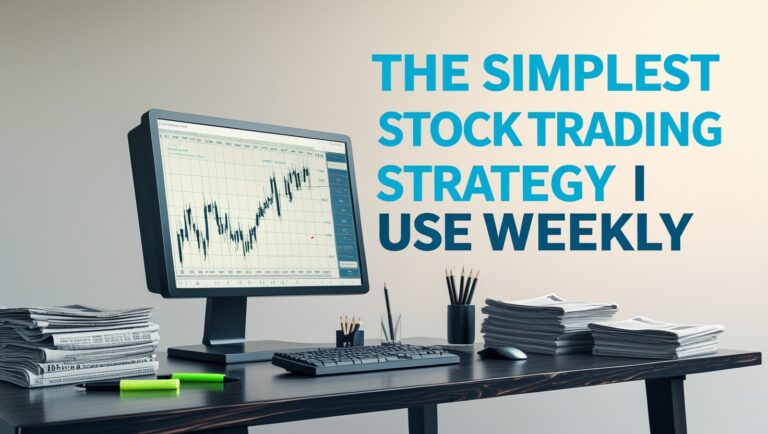The Morning Routine That Changed My Trading Game
The Morning Routine That Changed My Trading Game
When I first started trading, I used to wake up late, scroll Twitter, and randomly jump into trades without a real plan. I was chasing noise. My mornings were chaotic, and so were my trades. Every entry felt rushed. Every loss felt personal. And I had no structure. I wasn’t trading — I was gambling.
Everything changed when I built a morning routine that actually gave me control over my trading day.

Table of Contents
Why a Routine Matters More Than You Think
I learned that the first 30 minutes of my day had more impact on my P&L than any indicator or alert system ever did. When you show up with clarity, your trades follow that same energy. My routine gave me that clarity — and it’s the same process I still use today to pay my bills with the market.
If you want to see exactly how I find my trades and break down my strategy, grab my ebook here:
👉 How I Pay My Bills Trading Stocks
My Morning Trading Routine (Step by Step)
1. Wake Up Early and Stay Quiet
I start my day at least an hour before the market opens. No social media. No noise. Just silence, coffee, and focus. That’s where I get my head right.
2. Review Yesterday’s Trades
I look back at what worked — and what didn’t. I’m honest with myself. Did I follow my plan? Did I force a trade? This gives me real insight before jumping into anything new.
3. Scan the Market for Movers
I don’t need fancy software. I look at free screeners and check pre-market volume. I’m looking for stocks that are already moving with news or momentum — not ones I hope will move.
4. Build My Watchlist
I only need 6 stocks — that’s it. I’m not trying to chase 20 tickers. I focus on a few names that fit my setup and keep my attention clear.
5. Mark My Key Levels
I draw support and resistance zones for each stock. These levels help me know exactly where I’d enter, where I’d exit, and when to stay out.
6. Write Out My Plan
Yes, I write it down. I note: If XYZ breaks this level with volume, I’ll enter. If not, I’ll pass. It’s that clear. That focused. I don’t just wing it anymore.
What Changed After I Got Serious
Ever since I locked in this routine, my trading results have been more stable. I lose less. I wait more. I trade better setups. Most importantly, I feel in control. I’m not reacting to the market — I’m planning for it.
Why You Need One Too
If you’re waking up 5 minutes before the bell, you’re already behind. You don’t need to be perfect, but you do need a plan. Your routine is your edge. It’s what separates you from everyone else gambling with alerts.
And if you want to copy my exact structure and see how I read the market every morning — grab the ebook here:
👉 How I Pay My Bills Trading Stocks
7. I Don’t Trade Without a Plan Anymore
Waking up and hoping the market will give you a setup is not a strategy. I used to do that, and it cost me. Now, I won’t take a single trade unless it matches what I wrote in my morning notes. This change alone helped me avoid emotional entries.
8. No More Guessing Games
Once I started tracking what worked during the first 15–30 minutes of the market, I noticed patterns. Stocks with high pre-market volume and a news catalyst moved more cleanly. Now, I wait for those moves instead of trying to force trades.
9. I Removed All the Noise
I stopped watching what other traders were doing. No alerts. No chatrooms. No Discords. My routine became my guide. That helped me build confidence in my own process instead of relying on someone else’s opinion.
10. A Watchlist That’s Tight and Clean
I never look at more than 6 stocks. I write them down the night before or early in the morning, and that’s it. This keeps me from flipping through charts mid-market and making bad decisions just because something “looks interesting.”
11. I Keep It Simple
No indicators. No fancy setups. I only use price action, volume, and key levels. The simpler my trading got, the more profitable I became. That clarity came from having a structure before the bell.
12. My Energy Sets the Tone
How I show up matters. If I’m anxious or tired, I don’t trade. I’ve learned to be honest with myself. Some days, the best trade is not trading — and I can only recognize that when I start my day grounded and intentional.
13. I Know My Risk Before I Click Buy
In my routine, I already know my stop loss, position size, and profit target before I enter. That means I’m never caught off guard. I manage risk on paper before I ever put money on the line.
14. I Let the Stock Come to Me
This was a hard lesson. I used to chase setups. Now, I wait. If a stock doesn’t come to my level, I move on. It’s that patience that separates consistent traders from emotional ones.
15. Trading Is Just One Part of My Day
Once I started treating trading like a job — not an obsession — my results improved. I do my work early, then step away. That’s part of the routine: build your watchlist, execute the plan, and get out.
16. I Protect My Mental Capital
The stress of random trading adds up. My routine protects not just my money — but my mind. I feel calmer. More focused. Less reactive. And that peace translates into better results.
17. Consistency Over Perfection
I don’t win every trade. But I win more often now, and I lose smaller. That came from showing up the same way every morning, following the process, and trusting my system — not chasing perfection.
18. Want to Copy My Exact Setup?
Everything I do in the morning — from scanning to entry points — is broken down in my ebook. If you’re tired of feeling lost or scattered before the bell, I promise this will give you structure.
👉 Get the ebook here

Stay ahead in the stock market! Subscribe to our newsletter and receive exclusive stock flow reports, trading insights, and actionable tips directly in your inbox. Join thousands of traders who get our updates first.







